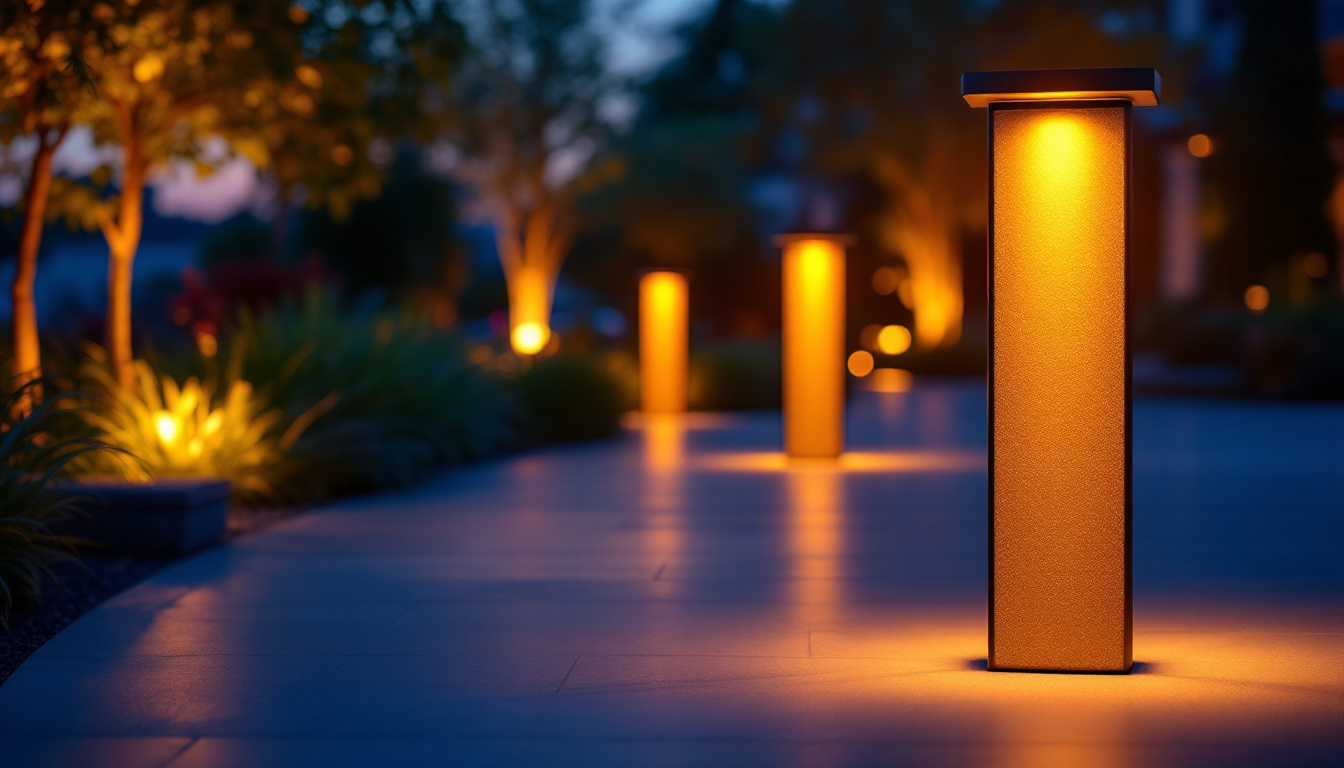

As the demand for energy-efficient lighting solutions continues to rise, LED tape lights have become increasingly popular in both commercial and residential applications. For lighting contractors, understanding the nuances of these versatile lighting options is essential for delivering high-quality installations that meet client needs. This article delves into the essentials of LED tape lights, exploring their benefits, applications, and installation considerations.
LED tape lights, also known as LED strip lights or ribbon lights, are flexible circuit boards populated with light-emitting diodes (LEDs), enclosed in a covering that provides durability and protection. These lights can be adhered to various surfaces, making them highly adaptable for a broad range of applications. Their low-profile nature allows them to be integrated into spaces where traditional lighting cannot fit.
The construction of LED tape lights typically includes a series of LEDs mounted on a thin, flexible circuit board. These strips are available in various lengths and can often be cut to size, enabling contractors to customize installations according to project requirements. Their flexibility is a key feature, allowing them to bend and conform to different shapes and surfaces while being lightweight and easy to handle. Additionally, many LED tape lights come with adhesive backing, simplifying the installation process and allowing for quick adjustments during setup.
LED tape lights come in various types, each designed to accommodate different lighting needs and preferences. The most common types include single color, RGB (red, green, blue), and RGBW (red, green, blue, white) tape lights. Single-color strips provide consistent lighting in a single hue, ideal for accent lighting or highlighting architectural features. On the contrary, RGB strips offer the versatility of color changing, allowing contractors to create dynamic lighting effects. These color-changing abilities can be controlled via remote or smartphone apps, making it easy to adjust the mood of a space with just a tap.
Another popular option is RGBW tape lights, which incorporate a dedicated white LED chip alongside the RGB diodes. This allows for a wider range of color temperatures, enabling more nuanced and warm-white lighting options. The choice of type will depend on the lighting goals of the project and the client’s preferences. Furthermore, some LED tape lights are designed with dimmable features, providing even greater control over the brightness and ambiance of the environment.
The applications for LED tape lights are virtually limitless. They are commonly used for accent lighting, under-cabinet lighting, cove lighting, and outdoor lighting. In residential settings, they can illuminate shelving units, staircases, and pathways, enhancing both functionality and aesthetics. For commercial spaces, LED tape lights can be employed to create mood lighting, highlight product displays, or provide indirect lighting in retail environments. Their ability to create a warm and inviting atmosphere makes them a popular choice for restaurants and hospitality venues, where ambiance is key to customer experience.
Outdoor installations are also becoming more prevalent, with waterproof LED tape lights designed specifically for outdoor use. These are ideal for illuminating patios, gardens, and walkways while adding to the ambiance of outdoor areas. The durability of these lights ensures they can withstand various weather conditions, making them a reliable choice for year-round outdoor decor. Understanding the specific application requirements is crucial for lighting contractors when selecting the appropriate LED tape lights for each project. Moreover, as energy efficiency becomes increasingly important, many LED tape lights offer significant savings on energy costs compared to traditional lighting options, making them an environmentally friendly choice for both residential and commercial applications.
Installation of LED tape lights requires careful consideration to ensure optimal performance and longevity. The first step involves assessing the installation environment, as factors like surface material and temperature can influence the product’s lifespan. Contractors need to ensure that the adhesive backing on the tape lights will adhere effectively to the chosen surface. For instance, surfaces that are textured or have a lot of imperfections may require additional preparation, such as sanding or applying a primer, to create a smooth, even base for the tape lights. Additionally, the ambient temperature during installation can affect the adhesive’s performance; cooler temperatures may require the use of a heat gun to activate the adhesive properly.
Proper planning of the installation layout is essential. Contractors should consider where the power supply will come from and how to connect the tape lights to it. Often, LED tape lights run on low voltage and require a transformer or driver for safe operation. It’s important to select a driver that can handle the power requirements of the entire length of tape being installed. Furthermore, planning the layout also involves determining the desired brightness and color temperature of the lights, as different tape lights can produce varying levels of light output and hues, which can significantly impact the overall ambiance of the space.
Power management is a critical factor in LED tape light installations. When designing the lighting layout, it is essential to calculate the total wattage of the tape lights and ensure that the power supply can handle that load. Additionally, voltage drop can occur over long runs, affecting brightness. To mitigate this, it is advisable to keep runs to a minimum length or use thicker gauge wires to maintain a consistent power supply. In some cases, it may be beneficial to use multiple power supplies strategically placed throughout the installation to avoid excessive voltage drop and ensure uniform lighting across the entire area.
Moreover, using connectors to join strips can simplify installation. These connectors can help maintain a clean finish while ensuring a secure electrical connection. When soldering is required, contractors should have a suitable technique to ensure longevity and performance of the installation. It is also worth noting that employing heat shrink tubing over soldered connections can provide additional protection against moisture and mechanical stress, further enhancing the durability of the installation.
Compliance with local electrical codes and standards is of paramount importance in any lighting installation. Lighting contractors must familiarize themselves with electrical codes, as well as any regulations specific to the use of LED tape lights. This includes understanding the appropriate mounting methods, connection types, and materials used to ensure safety and compliance. In addition, certain jurisdictions may have specific requirements regarding energy efficiency, which can influence the choice of LED products and their installation methods.
In addition to legal compliance, understanding the manufacturer’s guidelines for installation will enhance performance and reliability. Adhering to these specifications not only protects the contractor from liability but also ensures the long-term satisfaction of the client. Furthermore, providing clients with information on maintenance and care for their LED tape lights can foster trust and encourage repeat business, as satisfied customers are more likely to recommend services to others. Proper education on how to clean the lights and troubleshoot common issues can also empower clients to take ownership of their lighting systems, leading to a more successful and enduring installation experience.
LED tape lights represent a versatile and energy-efficient lighting solution that can transform the aesthetics and functionality of a wide array of spaces. For lighting contractors, gaining a thorough understanding of these products will enable them to deliver exceptional results, satisfy client expectations, and stay competitive in an evolving marketplace.
From understanding the various types and applications to mastering installation techniques, the effective use of LED tape lights can enhance any lighting project. By keeping abreast of best practices and ensuring compliance with safety standards, contractors can leverage this growing sector within the lighting industry to meet the diverse needs of their clients.
Ready to elevate your lighting installations with the efficiency and versatility of LED tape lights? At LumenWholesale, we provide lighting contractors like you with the highest quality, spec-grade lighting products at prices that can’t be beaten. Say goodbye to local distributor markups and hello to a vast selection of reliable lighting solutions that meet rigorous industry standards. With free shipping on bulk orders, you can stock up on premium LED tape lights and more, ensuring you have the right tools for every job. Don’t settle for less — choose LumenWholesale for the best value in wholesale lighting. Wholesale Lighting at the Best Value.

Discover the crucial aspects of warehouse ceiling lights that lighting contractors frequently miss.

Discover the indispensable role of troffers in modern lighting solutions for contractors.

Discover how LED sign lights can revolutionize the way lighting contractors manage costs.

Discover the often-overlooked aspects of bollard lighting that can transform outdoor spaces.
Get notified when NEW deals are released.
Optimize your budget with wholesale discounts.
Only top-quality, specification-grade lighting products.
No additional costs at checkout - what you see is what you pay.
We understand the unique needs of contractors.